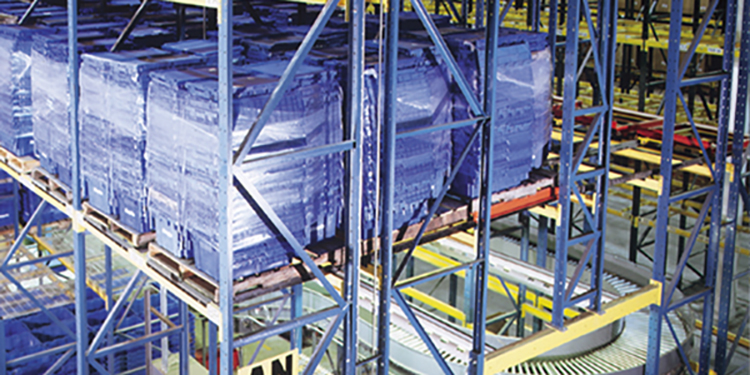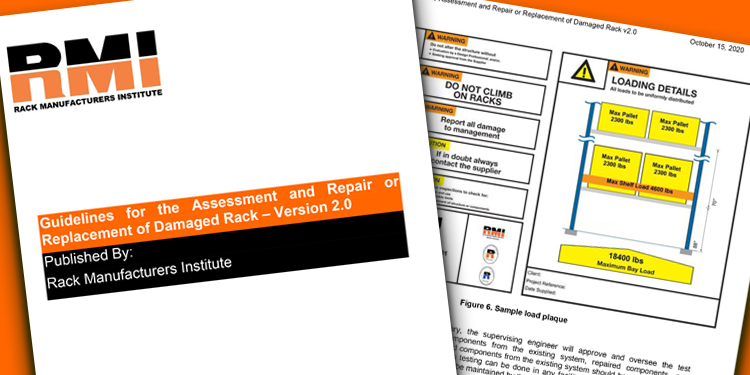When specifying industrial storage rack, operations that prioritize storage density and high-throughput access for large volumes of identical inventory often select last-in/first-out (LIFO) rack systems. In these storage racks, the most recently stored items are the first ones removed. LIFO rack is ideal for facilities storing homogeneous products that don’t expire or lose value over time. It can also save space and reduce travel distances for operators, since loading and unloading happen on the same side of the racking.
There are four primary LIFO rack styles, noted Terry Caston, Senior Director of Operations at Twinlode, a division of KPI Solutions. The company is a member of the Rack Manufacturers Institute (RMI).
“Each type of LIFO rack offers unique advantages depending on space constraints, product variability, and equipment compatibility,” he said. “Choosing the right LIFO rack system depends on a variety of operational factors, including available equipment, inventory types, and product velocity. Each type offers a strategic advantage in the right context.”
Here, an overview of each of the four main types of LIFO rack.
Style #1 | Double-Deep Selective Rack
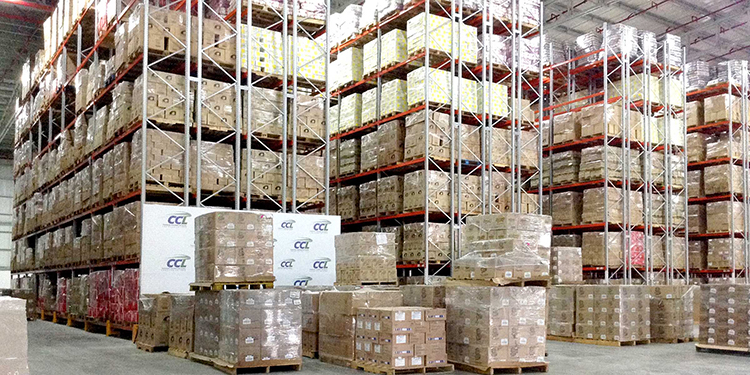
Double-deep selective rack is often an entry-level LIFO setup. A variation on traditional first-in/first-out (FIFO) selective racking, these systems store one pallet in front of another. By holding two pallets in a single storage position, double-deep selective increases storage density over single selective racks. Frequently, he added, a layout positions two rows of double deep rack back-to-back. This arrangement further increases storage density.
As Caston explained, “Operators load the rear position of a double deep selective rack first, then place the aisle-facing load. However, using these systems requires a special deep-reach fork truck that can extend the load into the rear storage location.”
The requirement for specialized load handling equipment can be a barrier for some operations, he said.
“Some operations prefer to standardize on a single lift truck. Also, deep-reach trucks incorporate outriggers for stability that the rack engineer must accommodate in the system design. Otherwise, they will impact the rack uprights,” Caston noted.
For outrigger clearance, double-deep selective rack designs with floor-stacked loads feature wider spacing within each bay. Alternately, placing load beams 10-12 inches above the floor for the lowest pallets to rest on reduces the risk of outriggers impacting rack uprights.
Style #2 | Pushback Rack (Roller- or Cart-Based)
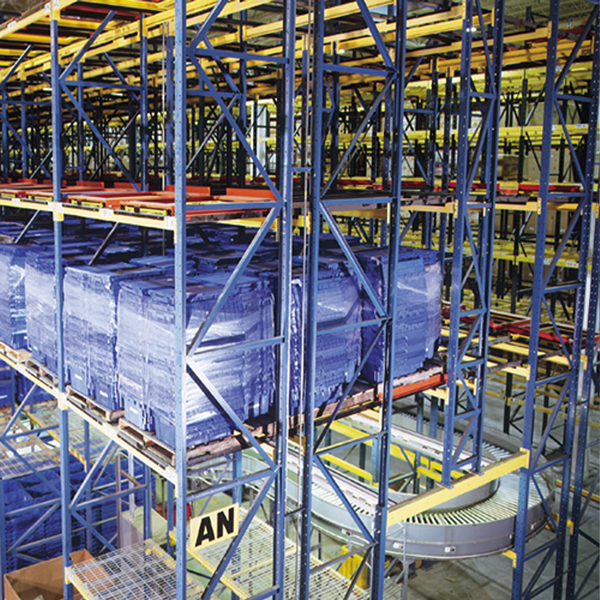
Pushback racking is one of the most popular LIFO rack systems due to its combination of density and accessibility. Pallets already loaded into a lane move backward as an operator adds each new pallet to the front of the system. This, however, requires lighter load weights and a forklift with enough torque and power to push a series of pallet loads back into the storage lane.
Pushback rack comes in two styles: a continuous inclined bed of rollers, or a series of nested carts that roll over inclined steel rails. Both types typically hold two to six pallets per lane, increasing inventory storage density. Because stored loads are generally lighter and smaller, Caston said, pushback rack can improve space utilization by as much as 95%.
For efficiency, each lane of pushback racking must contain identical pallets of product. “That means a four-level system could support four different stock keeping units (SKUs), one per lane—or level—in a bay. If a bay is two pallets wide, four levels, you could have eight different products stored in it,” explained Caston.
There are advantages and disadvantages to each style, he continued.
“Roller-based systems can support storage of different pallet sizes. If an operation handles product on 40 x 48-inch and 36 x 36-inch pallets, rollers allow them to use the same system for both. However, roller bearings require more maintenance than cart systems and—for safety—should incorporate bi-directional brakes. These allow loads to flow easily as the forklift pushes them into the system but slow their descent to the front during pallet removal,” said Caston.

“Carts, on the other hand, must match the size of the pallet they’re holding. Therefore, they can only handle one pallet dimension. They also become hung up more easily than rollers when loaded. However, they’re less expensive than roller-based systems,” he continued.
Additionally, pushback cart systems require more ceiling clearance, as they are taller than roller-based systems. While roller-based systems have a uniform, level loading surface, empty carts stack up on top of each other. The height of the carts adds up, Caston said, which necessitates an overall taller system height.
Style #3 | Drive-In Rack
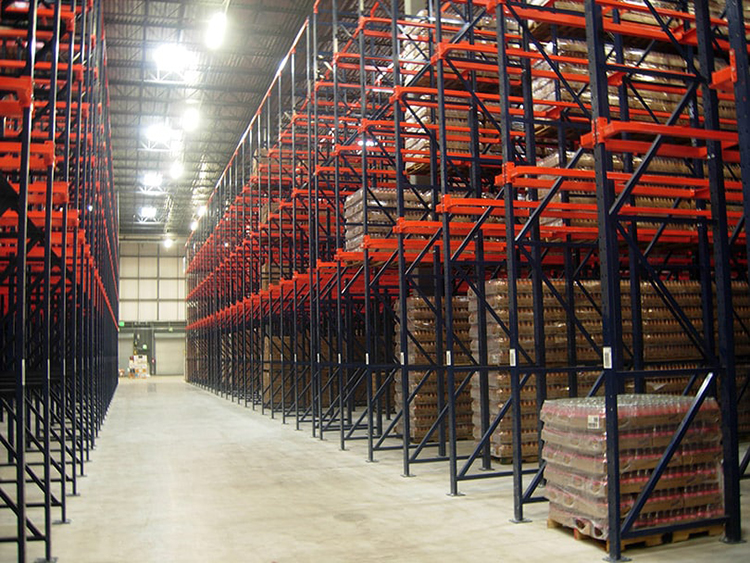
Drive-in racking is another LIFO rack solution offering high-density storage for uniform product lines. In this system, forklifts load and unload the rack structure from one side only. Pallets rest on continuous internal rails. There are no beams except at the top and rear of the system, which provide structural support.
“Drive-in racking works well when dealing with large quantities of identical SKUs where product expiration is less of a concern. For example, bottled water or packaging materials like cardboard,” Caston said. “But it requires skilled operators and careful maneuvering due to tighter spaces and the increased risk of rack damage.”
That’s because forklifts load the rack from back to front, bottom to top. The driver must raise the load to its designated storage elevation prior to entering the system, then back out after depositing it. Additionally, the operation must dedicate an entire bay to a single SKU.
“Drive-in is one of the less expensive types of high-density rack systems. That’s why people buy them,” said Caston. However, he also noted drawbacks such as poor selectivity and honeycombing, which are empty pallet positions resulting from incomplete loading.
Style #4 | Double-Wide Drive-In
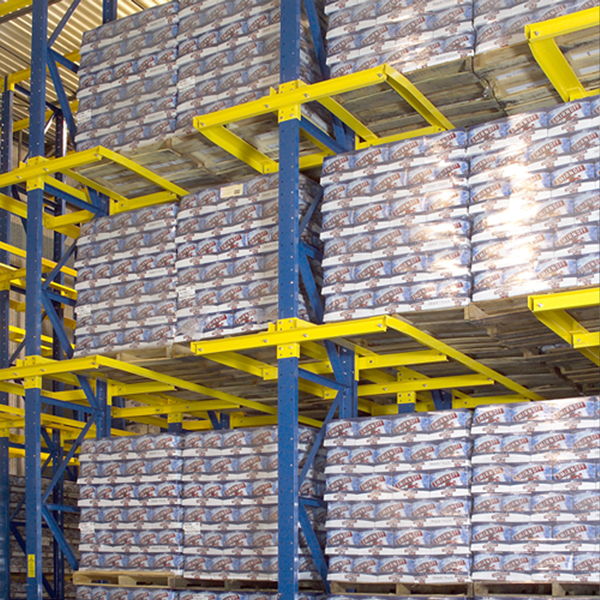
Double-wide drive-in racking—another LIFO rack style—builds upon the drive-in concept by doubling its productivity. This system uses quad-fork trucks to insert and remove two pallets at once. The rack features double-wide bay openings engineered and constructed with specific outer column placements and rail widths. An empty, column-free center allows the forklift to enter and back out of each bay.
“The result is higher throughput and labor efficiency. If an operation is moving a load somewhere, they’d rather pay a driver to make one trip moving two pallets simultaneously. It’s twice as productive in the same amount of time for labor,” he added.
Although it requires specialized equipment, the system enables high density storage of large quantities of items. Frequently used for beverage handling and distribution, double-wide drive-in is an extremely space-efficient LIFO rack option.
Learn More About Specifying LIFO Rack
Have more LIFO rack specification questions? RMI offers the publication, “Considerations for the Planning and Use of Industrial Steel Storage Racks.” Additionally, consult with RMI members for additional insights and recommendations. For more information, visit mhi.org/rmi.
